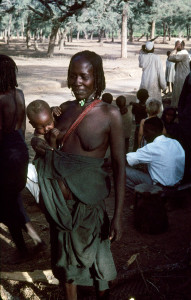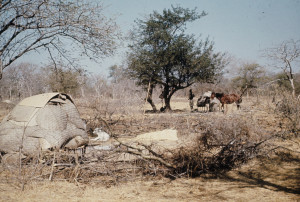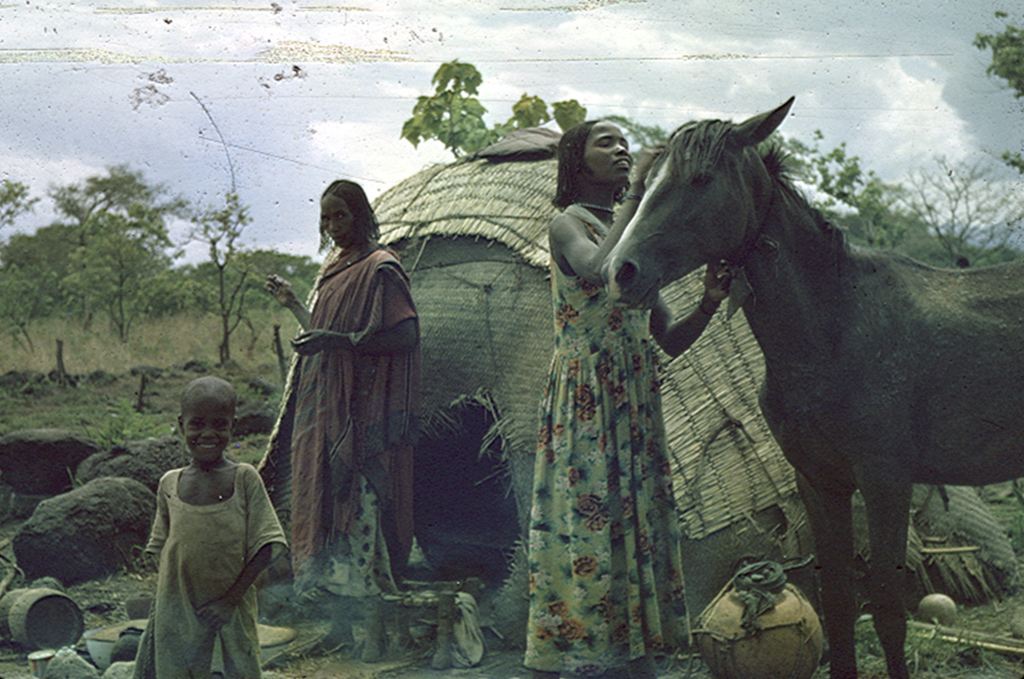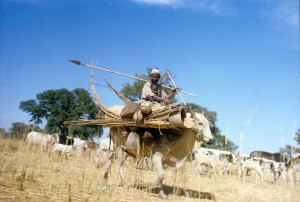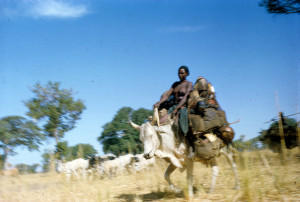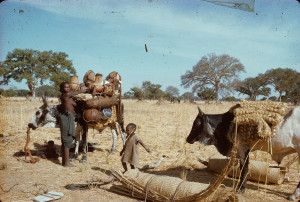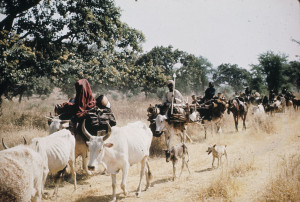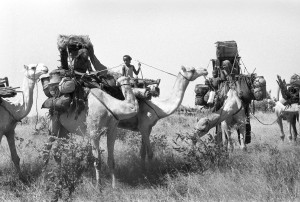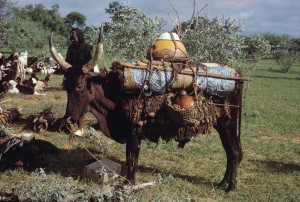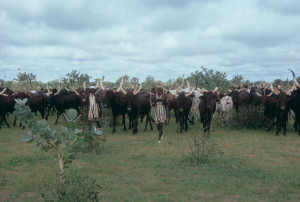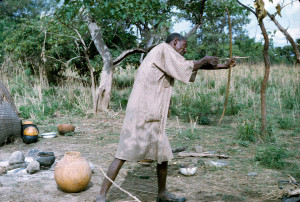A Fur woman is standing with her baby on the alluvial soils of wadi Aribo. Note the acacia albida trees (Fur: “kurul”, Arabic: “haraz”) in the background. The acacia albida trees are a characteristic feature of the lower wadis of Western Darfur. During the dry season the pods of the acacia albida provide nutritious food for the cattle of the Baggara Arab nomads who in this season camp on the harvested fields under the trees. The dung from the cattle serves to fertilize the fields of the Fur farmers who cultivate them in the rainy season. In the rainy season the acacia albida trees shed their leaves. This photo is from the dry season.
Wadi Aribo, near Zalingi, Western Darfur.
Photo: Gunnar Haaland, 1966
